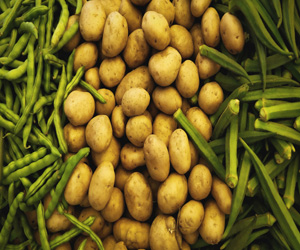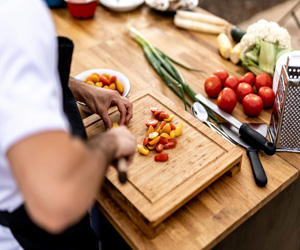


Reducing Environmental Footprints

In an era marked by heightened environmental awareness, consumers and companies are increasingly focusing on sustainable packaging solutions. Sustainably packaged products represent a significant shift in the way we view and use packaging materials. This movement aims to minimize the negative impacts of packaging on our planet and promote responsible consumption.
Defining Sustainable Packaging: Sustainable packaging, often referred to as eco-friendly or green packaging, prioritizes materials and design that reduce the environmental footprint of the entire packaging life cycle. This encompasses the production, transportation, use, and disposal of packaging materials.
The Importance Of Sustainable Packaging:
The shift toward sustainable packaging is driven by several key factors:
1. Environmental Impact: Traditional packaging materials, such as single-use plastics and excessive packaging, contribute significantly to environmental pollution, including ocean and landfills.
2. Resource Conservation: Sustainable packaging aims to reduce the consumption of non-renewable resources and promotes the use of renewable and recyclable materials.
3. Consumer Demand: As consumers become more eco-conscious, they actively seek products with sustainable packaging, influencing manufacturers to adapt their practices.
4. Regulatory Pressure: Governments and organizations are imposing regulations and guidelines to encourage or mandate sustainable packaging practices.
Sustainable Packaging Elements:
To achieve eco-friendliness, sustainable packaging incorporates various elements:
1. Recycled Materials: Using recycled materials for packaging helps reduce the need for new resource extraction and minimizes waste.
2. Biodegradability: Some sustainable packaging materials are designed to break down naturally, reducing the impact on the environment.
3. Reduced Packaging: Sustainable packaging often includes streamlined designs that minimize waste, unnecessary materials, and weight.
4. Renewable Resources: Packaging made from renewable materials, such as bamboo or cornstarch, are preferable as they can be replenished more rapidly than fossil fuels.
5. Reusable And Refillable Packaging: Encouraging consumers to reuse or refill packaging helps extend the lifecycle of packaging materials.
Benefits Of Sustainable Packaging:
Sustainable packaging offers several compelling advantages:
1. Environmental Protection: It reduces the amount of non-biodegradable waste and lowers carbon emissions, thereby protecting natural ecosystems and wildlife.
2. Cost Savings: Sustainable packaging can reduce production and transportation costs, making it an economically viable choice.
3. Enhanced Brand Image: Companies that adopt sustainable packaging are often seen as socially responsible and attract consumers who prioritize eco-friendly choices.
4. Regulatory Compliance: By adhering to sustainability guidelines, companies can avoid penalties and maintain a positive public image.
5. Consumer Appeal: Sustainable packaging appeals to environmentally conscious consumers, potentially increasing sales.
Challenges And Considerations: Despite its benefits, transitioning to sustainable packaging can be complex. Companies may face challenges related to sourcing sustainable materials, increased costs, and a lack of standardized regulations. However, with growing demand and technological advancements, these obstacles are becoming more manageable.
The adoption of sustainably packaged products is a promising step toward reducing the environmental impact of our consumption. It aligns with the broader goals of conserving natural resources, minimizing pollution, and fostering a more sustainable and responsible approach to product packaging. As consumers continue to prioritize sustainability, companies that embrace eco-friendly packaging solutions not only contribute to a healthier planet but also position themselves for long-term success in an increasingly eco-conscious market.
More Than A Caffeine Fix
 In Italy, coffee culture is synonymous with the espresso, a concentrated shot of liquid gold that Italians consume multiple times a day. The espresso bar, or "caffe," is not just a place to get a quick caffeine fix; it's a social hub where people gather to chat, argue, and take a moment to savor life.
In Italy, coffee culture is synonymous with the espresso, a concentrated shot of liquid gold that Italians consume multiple times a day. The espresso bar, or "caffe," is not just a place to get a quick caffeine fix; it's a social hub where people gather to chat, argue, and take a moment to savor life.
In the Middle East, coffee culture revolves around the intricate art of brewing and serving Turkish coffee. This finely ground, strong brew is not merely a pick-me-up; it's a gesture of hospitality and a symbol of cultural identity. The brewing process itself is a mesmerizing dance of tradition and ceremony.
Scandinavia, on the other hand, has redefined coffee culture with its embrace of the minimalist and Scandinavian concept of "hygge." Scandinavian cafes are known for their clean lines, cozy atmospheres, and a focus on quality over quantity. They take the time to appreciate the simple pleasure of a well-brewed cup.
The specialty coffee movement in the United States has revolutionized coffee culture, elevating it to a level of precision and craftsmanship previously unseen. Coffee lovers have become connoisseurs, scrutinizing everything from bean origin and roast level to brewing methods and latte art. It's a culture that values transparency and the connection between farmers, roasters, and baristas.
In Australia, the flat white is the king of coffee culture. This creamy, velvety espresso-based drink has a devoted following. Coffee shops down under are known for their emphasis on quality milk and the importance of a silky microfoam.
Nature's Flavorful Treasures
 Health Benefits: Beyond their culinary appeal, aromatic herbs offer an array of health benefits. They are often rich in antioxidants, vitamins, and minerals. For instance, basil contains essential nutrients like vitamin K and iron, which promote bone health and support overall well-being. Rosemary is known for its anti-inflammatory properties and its potential to enhance memory and concentration. Mint aids in digestion and alleviates symptoms of indigestion and irritable bowel syndrome. The list of health benefits associated with aromatic herbs is extensive, making them an integral part of a balanced diet.
Health Benefits: Beyond their culinary appeal, aromatic herbs offer an array of health benefits. They are often rich in antioxidants, vitamins, and minerals. For instance, basil contains essential nutrients like vitamin K and iron, which promote bone health and support overall well-being. Rosemary is known for its anti-inflammatory properties and its potential to enhance memory and concentration. Mint aids in digestion and alleviates symptoms of indigestion and irritable bowel syndrome. The list of health benefits associated with aromatic herbs is extensive, making them an integral part of a balanced diet.
A Culinary Journey Of Health And Flavor
 Fresh, Seasonal Ingredients: At the heart of Mediterranean cuisine is an unwavering commitment to using fresh, seasonal ingredients. Luscious tomatoes, vibrant bell peppers, succulent olives, aromatic herbs, and a bounty of fruits and vegetables are staples. The emphasis on seasonality not only ensures the freshest, most flavorful ingredients but also connects individuals to their environment and allows them to savor the unique tastes that each time of year brings.
Fresh, Seasonal Ingredients: At the heart of Mediterranean cuisine is an unwavering commitment to using fresh, seasonal ingredients. Luscious tomatoes, vibrant bell peppers, succulent olives, aromatic herbs, and a bounty of fruits and vegetables are staples. The emphasis on seasonality not only ensures the freshest, most flavorful ingredients but also connects individuals to their environment and allows them to savor the unique tastes that each time of year brings.
Olive Oil, The Liquid Gold: Olive oil is the cornerstone of Mediterranean cooking. It's not only used for its health benefits but is the primary source of fat in this diet. Rich in monounsaturated fats and antioxidants, olive oil is a vital ingredient in Mediterranean recipes, contributing to the cuisine's heart-healthy reputation.
Lean Proteins: Mediterranean cuisine values lean protein sources. Fresh seafood, including fish like salmon, sardines, and mackerel, is a regular feature. Legumes like chickpeas and lentils, as well as poultry, are also commonly consumed. Red meat is enjoyed in moderation, typically on special occasions.
A Marvel Of Precision And Craftsmanship
 Espresso machines are a complex amalgamation of components, each with a unique role in creating the perfect shot of espresso:
Espresso machines are a complex amalgamation of components, each with a unique role in creating the perfect shot of espresso:
Boiler: The heart of the machine, the boiler heats water to the ideal brewing temperature, typically between 195°F and 205°F (90°C to 96°C). It is equipped with a pressure release valve to maintain precise pressure levels.
Pump: Modern espresso machines often feature a pump to ensure a consistent and controlled flow of water through the coffee grounds. The pump generates pressure, which is vital for creating the crema—a signature layer of golden froth on top of the espresso.
Portafilter: The portafilter is the device used to hold the coffee grounds during brewing. It is an essential tool in distributing the grounds evenly and consistently, contributing to the even extraction of flavors.
Group Head: The group head is the component that connects the portafilter to the machine. It plays a crucial role in maintaining a stable temperature and pressure during the brewing process.
Steam Wand: Espresso machines often come equipped with a steam wand, used to froth milk for various espresso-based drinks like cappuccinos and lattes. The wand controls the release of steam to achieve the desired level of froth.
A Recipe For Health And Sustainability
 Health Benefits: Organic cooking prioritizes the quality and nutritional value of ingredients. Here are some key health benefits associated with organic cooking:
Health Benefits: Organic cooking prioritizes the quality and nutritional value of ingredients. Here are some key health benefits associated with organic cooking:
Nutrient-Rich Ingredients: Organically grown foods tend to be richer in essential nutrients, such as vitamins, minerals, and antioxidants. This means that meals prepared with organic ingredients can provide a more substantial nutritional punch.
Avoiding Harmful Chemicals: Organic cooking eliminates the risk of ingesting synthetic pesticides and herbicides commonly found on conventionally grown produce. These chemicals have been linked to various health issues, making organic options a healthier choice.
Reduced Exposure To Antibiotics And Hormones: Organic meats and dairy products come from animals that are raised without antibiotics and synthetic hormones. By consuming organic animal products, you reduce your exposure to these potentially harmful substances.
Better For Allergies: Organic foods have been reported to be less likely to trigger allergies due to their lack of synthetic chemicals and genetically modified ingredients.
Embark On Your Culinary Journey
 2. Cost-Effective: Eating out or ordering takeout can be expensive. Cooking at home is often more budget-friendly and cost-effective in the long run.
2. Cost-Effective: Eating out or ordering takeout can be expensive. Cooking at home is often more budget-friendly and cost-effective in the long run.
3. Empowerment: Learning to cook empowers you to take charge of your diet and make informed food choices. It's a life skill that fosters independence.
4. Culinary Exploration: Cooking introduces you to different cuisines, ingredients, and flavors. It's a journey of exploration and creativity.
5. Sense Of Accomplishment: Preparing a meal from scratch and sharing it with loved ones can be immensely satisfying. It's a source of pride and accomplishment.
Tips For Cooking For Beginners
Here are some practical tips to help beginners embark on their culinary journey:
1. Start With The Basics: Begin with simple recipes and gradually work your way up to more complex dishes. Cooking is a skill that develops over time.
2. Gather Essential Tools: Invest in a few essential kitchen tools, such as a sharp knife, cutting board, pots, and pans. These items are the foundation of any kitchen.